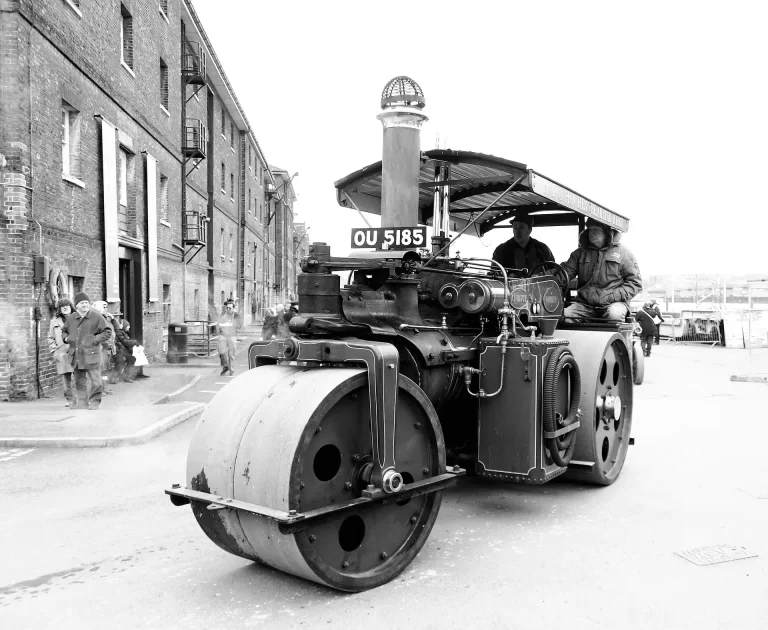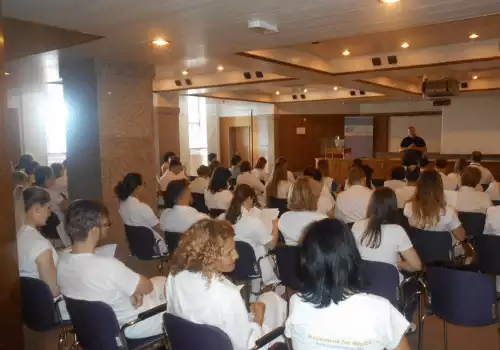The red light reflex is the opposite of the green light reflex and is common to all living beings with a spine.
The red light reflex serves as a defense mechanism against sudden change or danger, manifesting as a withdrawal or retreat response. It is the opposite of the green light reflex and is common to all living beings. Upon a sudden loud noise or crash, this reflex activates, contracting the muscles on the front of the body. The abdominal muscles tighten, the chest muscles contract pulling the head forward, the inner thigh muscles tense, and pressure increases on the bladder. This reaction pushes the body backward, away from whatever surprised, attacked, or threatened us. Imagine someone swinging a knife at you—you instinctively recoil due to this reflex activation. When such a movement is intentional, its purpose is to express kinetic energy forward, which, due to the law of reciprocal effect, pushes the body backward. We shift into the red light reflex when we act and express the energy previously built up through the green light reflex. Proper acute coordination of this reflex enables effective actions through which we influence the environment and manage what disturbs, obstructs, threatens, or limits us. The further we can go into this reflex, the more decisively we can act, which increases both the impact and the durability of that action.
Emotional maturity is therefore crucial, allowing us to endure the strong activation of the red light reflex required to complete an action. This is why many people resist completing tasks and fear the consequences of doing so—because the activation of the red light reflex necessary for completion is simultaneously experienced as fear and anxiety. Most have felt this before. A clear example is the game show “Who Wants to Be a Millionaire” and the question: “Is that your final answer?”
If I compare the process of converting the potential energy created by the green light reflex into the kinetic energy of action and influence, with driving a car, it’s like pressing the gas pedal on a green light and converting the car’s fuel potential into forward motion toward a goal—the act carried out by the car under the driver’s instructions. For this transformation to be effective, the soma must be free of sensory-motor amnesia (SMA) and chronic activation of either reflex, as chronic activation of one impairs the other’s efficiency.
To understand this, it’s important to realize that a relaxed muscle holds the highest potential energy, while a fully contracted muscle has the lowest. The difference in potential energy during increased muscle tone becomes kinetic energy, which alone can perform useful work—but only if higher potential energy was present beforehand.
A chronically activated red light reflex prevents full green light activation and thus readiness for action. It’s like seeing both red and green traffic lights on at the same time—though red may be brighter, it confuses you and blurs your decision-making. Your response becomes less efficient and your actions less clear.
With constantly engaged red light reflex, posture becomes aged, hunched forward, with a rounded upper back and forward-thrust head. Prolonged activation leads to shallow breathing, arrhythmia, asthma, hemorrhoids, flat feet, migraines, tinnitus, digestive and metabolic issues, pain in shoulders, hips, knees, and feet, apathy, sadness, depression, hopelessness, and fatigue. This reflex, in its chronic form, is responsible for most spinal issues, because the person hides its impact behind an overactivated green light reflex, overloading the spine and altering its function and structure (herniation, protrusion, degeneration, scoliosis, spinal stenosis).
Worry, fear, depression, caution, inconspicuousness, modesty, excessive self-criticism, lack of confidence, indecisiveness, withdrawal, a tendency to sit, and chronic fatigue are typical traits of individuals with a chronically active red light reflex. They perceive problems as larger than they are, are overly cautious and deliberate, miss opportunities for progress, and are often very conservative and past-oriented. They dislike surprises, often anticipate all scenarios, and demand reliability and predictability from others. Such a person is either very quiet or excessively loud, holds their head forward, has a compressed or even sunken chest, breathes shallowly and rapidly, their skin is pale, and they often feel cold in their hands or feet. They feel anxiety and fear even when there is nothing to be afraid of, view the future pessimistically, tire quickly, and constantly wear themselves out. Their gait is marked by short steps, they appear tired, slow, and cautious. Over the years, their body becomes increasingly hunched.
An example of a strong red light reflex.









